NEWS
EVENTS
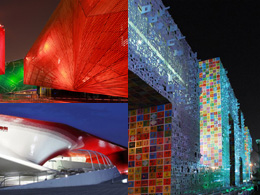
04 October, 2010
Shanghai Expo Pavillions
The World Expo 2010 is being held on both banks of the Huangpu River in the city of Shanghai, China (until October 31, 2010).
The theme of the exposition is "Better City - Better Life" and signifies Shanghai's new status in the 21st century. The expo Logo features the Chinese character 世 (means 'world') modified to represent three people together with the 2010 date. It is the most expensive Expo in the history of the world's fairs. The Shanghai World Expo is also the largest World's Fair site ever at 5.28 square km.
More than 190 countries and more than 50 international organizations participate in the Shanghai World Expo, the largest ever. China expects to receive almost 100 foreign leaders and 70-100 millions of visitors from across the world for the World Expo 100 which would make it the most visited in history.
Austria Pavilion
Architects: SPAN & Zeytinoglu
The Austrian Pavilion, by Vienna-based architects SPAN & Zeytinoglu, called 'Austria - Feel the Harmony' reflects the country's interaction of city, landscape, nature, urban habitats and urban cultural landscapes through its design. This is why it causes quite a sensation in Shanghai. "We are glad that is was erected precisely according to our plans", says architect Arkan Zeytinoglu.
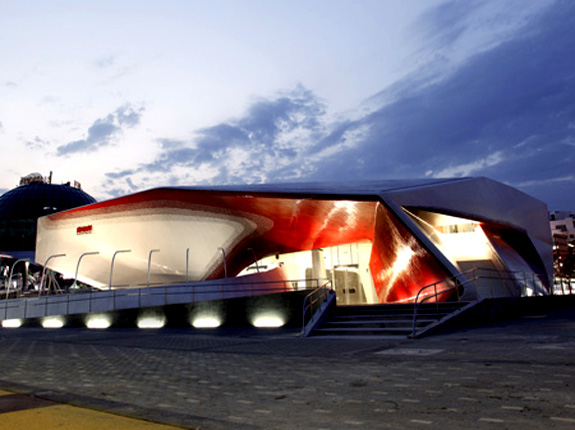
The Viennese architects sheathed their home country's pavilion for the international exhibition, which changes in color from red to white. The cladding of the complex pavilion exterior was made possible by the selection of tiny hexagonal modules. The result is a shimmering surface area that appears completely seamless despite being held together by 60 million joints.
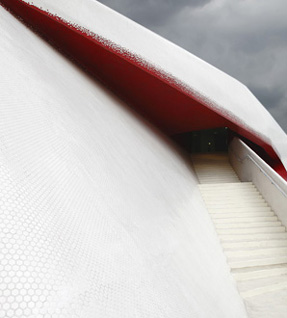
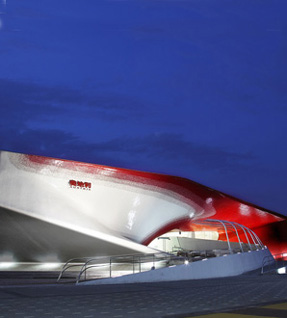
Based on the design methodology for the Pavilion, SPAN & Zeytinoglu also developed the entire interior design including the restaurant, the shop and the VIP area in addition to the exhibition space and the office area. As part of the interior fittings, the team designed the restaurant and the VIP bar, the shop desk, the info desk, the modular lounge in the VIP area and the reception desk in the VIP lobby. The design objects are made from CNC-milled polyurethane and coated with synthetic resin. CNC (Computer Numerical Control) is a technology originally developed for the aviation industry, enabling the precise construction of digitally generated, complex curved objects.
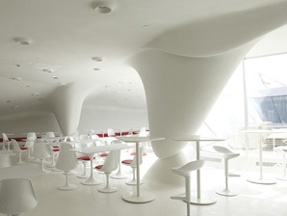
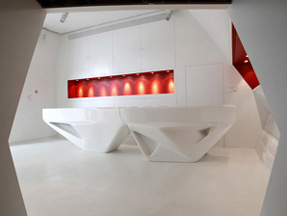
"Although the objects have a value of their own, their integration into the architecture is essential. Spaces and objects have to form a symbiosis and enhance each other," says del Campo. "The Austrian pavilion directly reflects this practice," adds Manninger. "Its organic, curvilinear forms and the continuous flow between spaces base on natural geometric systems."
Info: http://www.architravel.com/architravel/building/681
Canada Pavilion
Architects: Cirque du Soleil
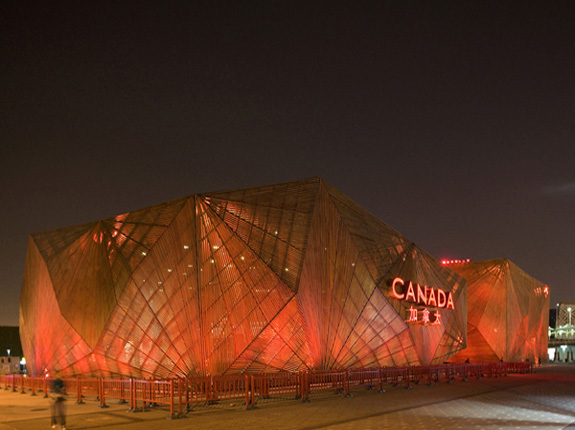
Designed by Cirque du Soleil and built by Canadian firm, SNC-Lavalin Inc., the 6,000-square-meter Canada Pavilion is one of the largest pavilions of the Expo and it is expected to welcome up to 5.5 million people or 30,000 visitors per day during the six-month Expo period.
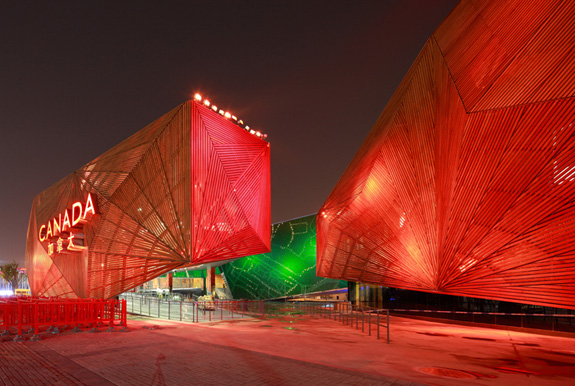
The overall budget for the Canadian Pavilion was 43.57 million dollars. Canada has also given environmental protection consideration into the pavilion. The exterior of the pavilion is clad in wood slats and features a special collection system to harvest rainwater, which will then be used inside the building. Inside the courtyard, the walls are covered with a special kind of greenery. Prime Minister of Canada said of the Pavilion: "It will present Canada as the modern, democratic, bilingual, diversified and environmentally responsive country that it is. A country with cities that are innovative, creative and prosperous places."
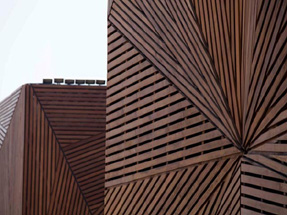
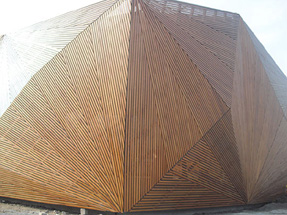
Cirque du Soleil has also partnered with The Canadian Government to create public performances, organize cultural programs and develop strategic corporate alliances for the pavilion. The pavilion open public place is surrounded by three large structures. The square is a performing area, where visitors can watch the performances of Cirque du Soleil before checking out the pavilion. Under the theme "The Living City" the Cultural Program will include works and productions in fields as varied as dance, music, theatre, literature and visual arts.
Info: http://www.architravel.com/architravel/building/689
Israel Pavilion
Architects: Haim Dotan Architects
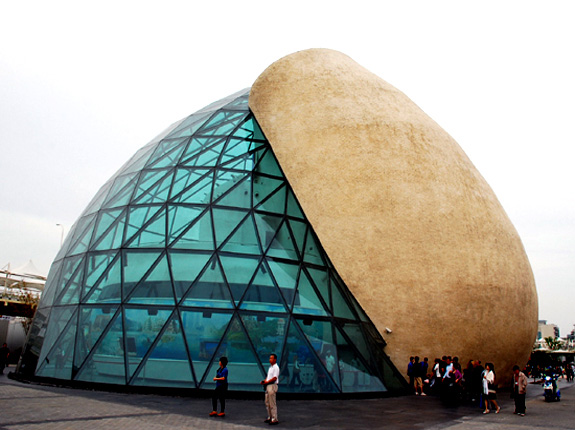
The Israeli Pavilion designed by Haim Dotan Architects is composed of two streamlined buildings hugging each other. 24 meters in height, the 1200 square meter pavilion is built on a 2000 square meter site and it looks like a 'seashell'. One side of the seashell is made of authentic stone while the other is made from transparent glass. The design symbolizes Israeli's innovation in technology as well as represents the dialogue between humanity and nature, the earth and the sky, and the past and the future.
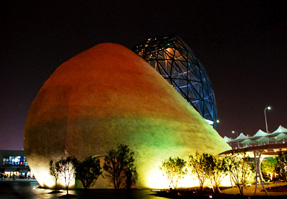
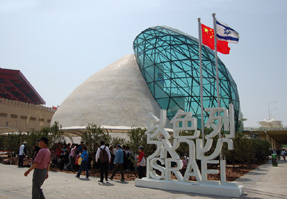
The structure is composed of three major areas: the 'Whispering Garden', the 'Hall of Light' and the 'Hall of Innovation'. In the 'Hall of Light', situated close to the entrance of the building, the area houses a multimedia presentation showcasing the history of the Jewish evolution on a 15 meter high screen.
Surrounding the main body of the Pavilion, the 'Whispering Garden' features 50 planted orange trees, symbolic of the Israeli culture. Visitors are able to walk around this green orchard and become familiar with the Israeli advancements in irrigation technologies.
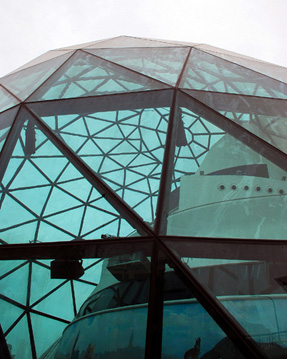
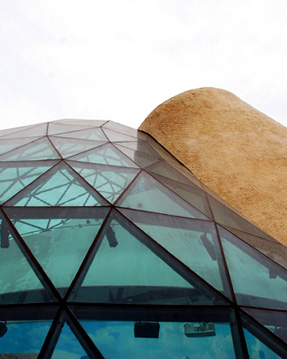
The 'Hall of Innovation' is the centerpiece of the Israel Pavilion. A special audio-visual show will allow visitors to talk with Israeli children, scientists, doctors and inventors via hundreds of screens. These Israelis will introduce themselves and share their hopes for a better future. Israel allocated about $6 million for its participation at Expo 2010, which includes the cost of its pavilion and other activities. It is the first time Israel has committed to building a national pavilion at a World Expo.
Info: http://www.architravel.com/architravel/building/717
Monaco Pavilion
Architects: NACO
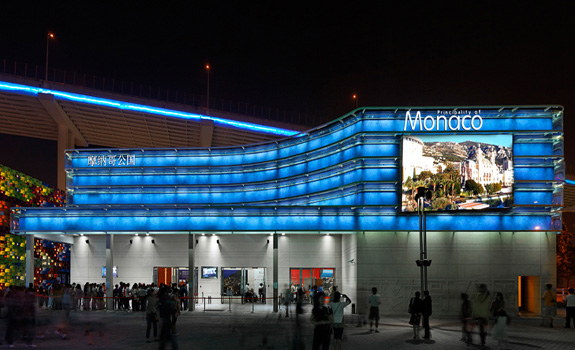
NACO has come up with a building image that expresses the identity of the client and also taken a global approach to architectural design adopted by Marcelo Joulia, which combines hard construction and media creations conceived as accelerators for encounters in urban space. The result is a chunk of the Monegasque coast that projects the ceaseless ripples of the Mediterranean, literally transposed onto a 12 m-high vertical envelop in Pudong.
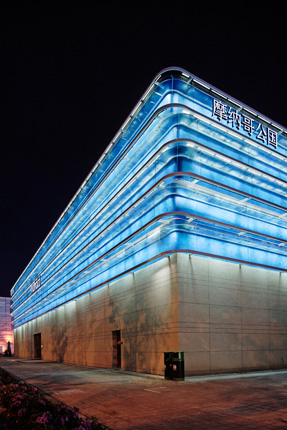
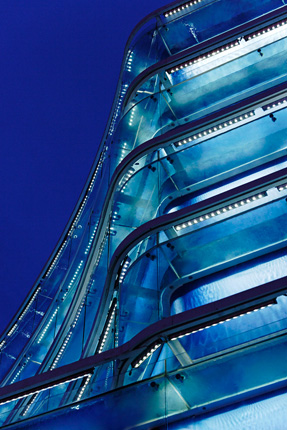
The 3D digital morphing of the Mediterranean inlet displays dancing pixels. The system relies on a network of feeder pipes that are constantly topping up real miniature sea pools hidden behind the facade, and whose constant pattern-changes are reflected onto the glass envelop to light up the pavilion. As soon as the sun goes down, artificial lighting takes over. Sunlight is used as an architectural device that ensures flow, because the building is also solar-powered.
The 2,000-square-meter pavilion invite visitors to explore the evolution of cars and city transformation from Monaco Grand Prix's beginning in 1929 in a special area dedicated to Formula One. Upon entering the pavilion, visitors will see a six-minute animation movie "Monaco, a rock for eternity" exclusively produced for the Expo. An extraordinary adventure will be unfolded, which will send visitors back to prehistoric times.
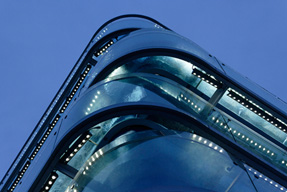
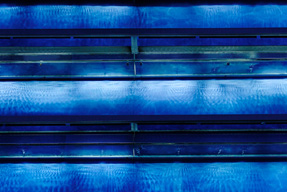
The cinema can accommodate 250 people and is equipped with a high definition screen of 56 meters. A walk along typical old streets of Monaco allows visitors to discover the city and its flora and fauna.
Info: http://www.architravel.com/architravel/building/713
Republic of Korea Pavilion
Architects: Mass Studies
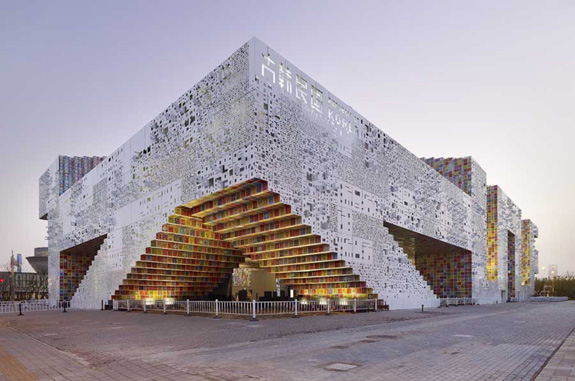
The Korean Pavilion is situated in zone a, directly neighboring the Japan pavilion and the Saudi Arabia pavilion, and in close proximity to the China pavilion. The site is around 6000 square meters, and it is one of the largest lots within the Expo compound. Located on the perimeter of the zone, the site takes advantage of the views out towards the Huangpu River and the Shanghai skyline.
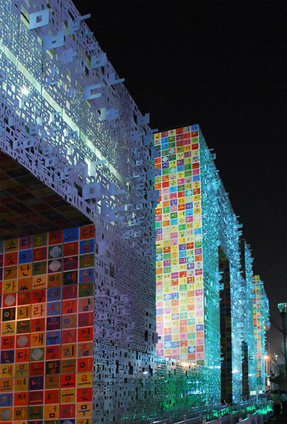
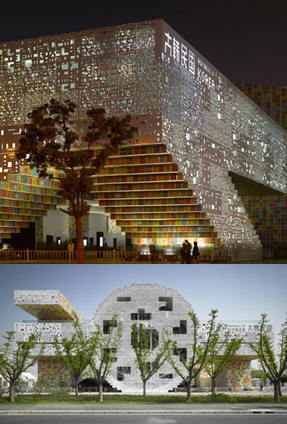
Han-geul, the Korean alphabet, is the prime element of 'signs' within the pavilion. The overall volume, lifted 7.2m above ground level, is created by converging these han-geul letters, allowing signs to create the exhibition space, and so that the visitors can experience their geometry through horizontal, vertical and diagonal movements. The primary geometries that compose the han-geul letters are universal to other cultures, thus acting as a sort of 'open' set of signs that is engaging to everyone.
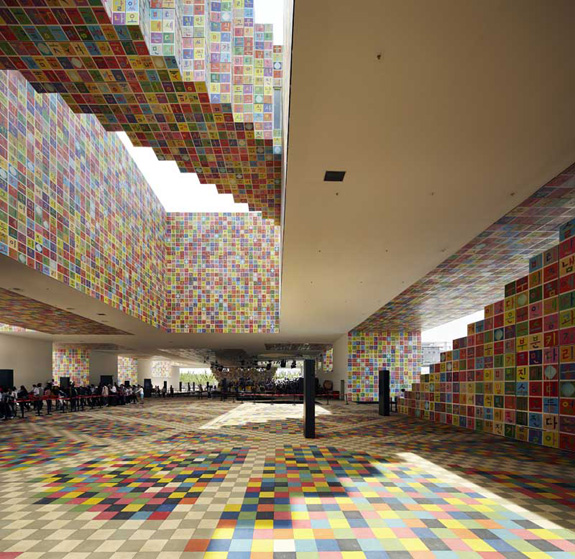
Most of the non-peripheral surfaces are composed of art pixels, which are 45cm x 45cm aluminum panels created by a Korean artist, Ik-joong Kang, who is renowned for creating massive art walls out of small hand-painted tiles, either self-produced or by gathering from around the world.
The exterior surfaces of the Korean pavilion are clad in 2 types of pixels: han-geul pixels and art pixels. Han-geul pixels are white panels with a relief of letters in four different sizes whose combination forms the majority of the exterior, mainly the peripheral surfaces.
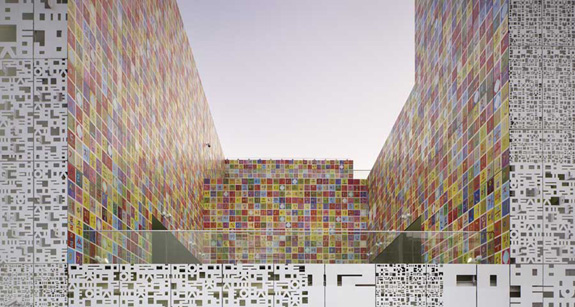
Sequential lighting is installed behind the han-geul pixels to highlight the individual letters on the exterior façade at night, further animating the pavilion as a sign (like a text message) on a larger scale.
Info: http://www.architravel.com/architravel/building/715
Maria Anagnostou, Anna Loukidou, Eva Aetopoulou (ArchiTeam)
Alexios Vandoros (advisor)
Related articles:
- Norway-Powered by Nature ( 26 September, 2011 )
- Shanghai Expo Pavillions 2 ( 11 August, 2010 )
- Shanghai Expo Pavillions 3 ( 22 August, 2010 )










